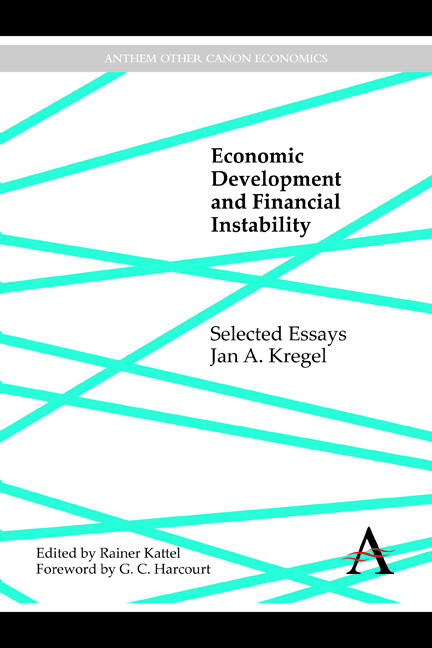Book contents
- Frontmatter
- Contents
- Foreword
- Publication History
- I Theoretical Discussions
- II Finance for Development
- III The Crisis in the US and the EU
- 16 Alternative Economic Analyses of German Monetary and Economic Unification: Monetarist and Post Keynesian
- 17 Currency Stabilization through Full Employment: Can EMU Combine Price Stability with Employment and Income Growth?
- 18 Minsky's “Cushions of Safety,” Systemic Risk and the Crisis in the Subprime Mortgage Market
- 19 Why Don't the Bailouts Work? Design of a New Financial System versus a Return to Normalcy
- 20 Is This the Minsky Moment for Reform of Financial Regulation?
- 21 Debtors' Crisis or Creditors' Crisis? Who Pays for the European Sovereign and Subprime Mortgage Losses?
- 22 Six Lessons from the Euro Crisis
- 23 Minsky and the Narrow Banking Proposal: No Solution for Financial Reform
- Index
20 - Is This the Minsky Moment for Reform of Financial Regulation?
from III - The Crisis in the US and the EU
Published online by Cambridge University Press: 05 November 2014
- Frontmatter
- Contents
- Foreword
- Publication History
- I Theoretical Discussions
- II Finance for Development
- III The Crisis in the US and the EU
- 16 Alternative Economic Analyses of German Monetary and Economic Unification: Monetarist and Post Keynesian
- 17 Currency Stabilization through Full Employment: Can EMU Combine Price Stability with Employment and Income Growth?
- 18 Minsky's “Cushions of Safety,” Systemic Risk and the Crisis in the Subprime Mortgage Market
- 19 Why Don't the Bailouts Work? Design of a New Financial System versus a Return to Normalcy
- 20 Is This the Minsky Moment for Reform of Financial Regulation?
- 21 Debtors' Crisis or Creditors' Crisis? Who Pays for the European Sovereign and Subprime Mortgage Losses?
- 22 Six Lessons from the Euro Crisis
- 23 Minsky and the Narrow Banking Proposal: No Solution for Financial Reform
- Index
Summary
I. A Minsky Moment?
The recent instability in the mortgage markets, driven by the securitization of nonconforming subprime and Alt-A mortgages, was initially characterized by some market analysts as a “Minsky Moment.” Yet, in March of 2007, the Chairman of the Federal Reserve considered “the impact on the broader economy and financial markets of the problems in the subprime markets seems likely to be contained” (Bernanke 2007). Nonetheless, this relatively small one trillion dollar sector of the mortgage market soon produced a crisis of the entire U.S. financial system, which, in the words of Treasury Secretary Paulson, was “the worst financial crisis in the nation's history” (Paulson 2008). This more general financial crisis was also baptized a “Minsky Moment.”
However, those who are acquainted with Minsky's work will recognize that his approach had little to do with “moments.” It was about the sustained, cumulative processes in which periods of stability induce an endogenous increase in potential financial fragility. Fragility provides the fertile ground for financial instability, leading to a process of debt deflation and a full-blown Minsky crisis. On this basis, the initial subprime crisis was not the result of a Minsky process of increasing financial fragility, but rather the result of a simple Ponzi scheme that was preprogrammed into nonconforming mortgages and the structured products for which they served as collateral (Kregel 2008).
- Type
- Chapter
- Information
- Economic Development and Financial InstabilitySelected Essays, pp. 309 - 324Publisher: Anthem PressPrint publication year: 2014



